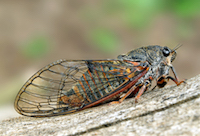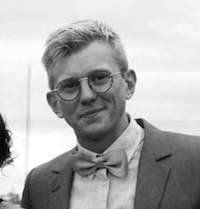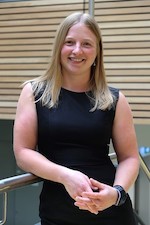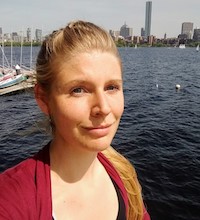Tuna Depletion Simulation | Joe Scutt-Philips


Biological & Environmental Systems Research
Biological systems are an archetypal complex adaptive system: from molecules to ecosystems, biological systems exhibit properties and interactions that change over time (in non-arbitrary ways) as a result of development, self-repair, learning, ecological dynamics and evolution.
 Domain Visualisation Examples
Domain Visualisation Examples
Ecology and Ecosystem Services
Human society impacts and, in many cases, dominates the regulation of climate, biodiversity, and the biogeochemical cycles essential to human life. A systems science approach articulates social, economic and ecological systems as strongly coupled, and with potential for resilience, stability, durability and robustness. Empirical analysis and computational modelling are increasingly relevant to shaping policy that can cope with local, regional and global vulnerabilities regarding food production, energy security, ecological services, employment and income.
Key Contacts
- Angela Watkins
- Davide Zilli
- Joe Scutt-Phillips
Thesis: Rediscovering Endangered Species with Sound, Machine Learning and Citizen Science - Davide Zilli
 My PhD started and revolved around the New Forest Cicada Project, an effort to re-discover a critically endangered species of cicada before its extinction. The New Forest Cicada is the only cicada native to the UK. Between May and July it sings with its distinctive high-pitched song, particularly difficult for most adults to hear as it is at the upper limit of our hearing range. Sightings of the cicada within the New Forest date back to 1812, but the last unconfirmed sighting was in 2000.
My PhD started and revolved around the New Forest Cicada Project, an effort to re-discover a critically endangered species of cicada before its extinction. The New Forest Cicada is the only cicada native to the UK. Between May and July it sings with its distinctive high-pitched song, particularly difficult for most adults to hear as it is at the upper limit of our hearing range. Sightings of the cicada within the New Forest date back to 1812, but the last unconfirmed sighting was in 2000.  Cicada Hunt App However, it's likely that colonies remain undiscovered in less visited parts of the forest. In my PhD research we developed a machine learning algorithm based on a Hidden Markov Model that can detect the presence of a cicada in a sound recording.
Cicada Hunt App However, it's likely that colonies remain undiscovered in less visited parts of the forest. In my PhD research we developed a machine learning algorithm based on a Hidden Markov Model that can detect the presence of a cicada in a sound recording.  Cicada montanaWe have implemented this algorithm on a smartphone app that enables the millions of yearly day visitors to the New Forest to help us detect the presence of this cicada. Tens of thousands of reports have been submitted to date from more than 5000 users, from within the New Forest and around the world. The cicada has yet to rediscovered, but the search continues. The methods of the project have been applied in citizen science research around bird and bat conservation, malarial mosquito detection and many other areas.
Cicada montanaWe have implemented this algorithm on a smartphone app that enables the millions of yearly day visitors to the New Forest to help us detect the presence of this cicada. Tens of thousands of reports have been submitted to date from more than 5000 users, from within the New Forest and around the world. The cicada has yet to rediscovered, but the search continues. The methods of the project have been applied in citizen science research around bird and bat conservation, malarial mosquito detection and many other areas.
Thesis: On the Movement Behaviours of Tropical Tunas in Modern, Commercial Fisheries - Joe Scutt-Phillips
 My research interests center on trying to understand and predict the behaviour of marine ecosystems, in which fishing pressure, changing climate and loss of biodiversity are of immediate concern in many parts of the world. In particular, I am interested in the ways in which small-scale ecological behaviours, processes and dynamics can result in unexpected patterns or impacts at larger ecosystem-scales. I aim to incorporate modern thinking on complex systems theory into my research, embracing the complexity, interactions and scale present in natural systems.
My academic and professional background has provided me with a strong grounding in the mathematics and programming skills required to examine interesting and critical ecological questions. Simultaneously, I have the in situ experience to be both passionate about, and considerate of, the factors that are important in ecology and Pacific Island fisheries, from how data is collected through to navigating the scientific network required to provide advice for small-scale to commercial stakeholders.
My research interests center on trying to understand and predict the behaviour of marine ecosystems, in which fishing pressure, changing climate and loss of biodiversity are of immediate concern in many parts of the world. In particular, I am interested in the ways in which small-scale ecological behaviours, processes and dynamics can result in unexpected patterns or impacts at larger ecosystem-scales. I aim to incorporate modern thinking on complex systems theory into my research, embracing the complexity, interactions and scale present in natural systems.
My academic and professional background has provided me with a strong grounding in the mathematics and programming skills required to examine interesting and critical ecological questions. Simultaneously, I have the in situ experience to be both passionate about, and considerate of, the factors that are important in ecology and Pacific Island fisheries, from how data is collected through to navigating the scientific network required to provide advice for small-scale to commercial stakeholders.
- Scutt Phillips J., Sen Gupta A., Senina I., van Sebille E., Lange M., Lehodey P., Hampton J., Nicol S. 2018. An individual-based model of skipjack tuna (Katsuwonus pelamis) movement in the tropical Pacific Ocean. Progress in Oceanography 164, 63–74.
- Scutt Phillips J., Pilling G., Leroy B., Evans K., Usu T., Lam C-H., Schaefer K., Nicol S. 2017. Revisiting the vulnerability of juvenile bigeye (Thunnus obesus) and yellowfin (T. albacares) tuna caught by purse-seine fisheries while associating with surface waters and floating objects. PLoS One, 12(6), e0179045
- Scutt Phillips J., Sen Gupta A., van Sebille E., Senina I., Lehodey P., Nicol S. 2016. Individual-based methods for simulation of movement by WCPO skipjack and other pelagic species. Proceedings of the Western and Central Pacific Fisheries Commission Scientific Committee 12th Regular Session, Bali, Indonesia.
Neuroscience
Key Contacts
- Gwen Palmer
- Alex Diem
- Roxana Aldea
Thesis: Modelling Neuronal Activity At The Knee Joint - Gwen Palmer
Thesis: Prediction of Perivascular Drainage of Aβ from the Brain Using Computational Modelling: Implications for Alzheimer's Disease - Alex Diem
 Cardiovascular diseases pose a serious health risk world-wide and are thus the target of a large body of research in computational physiology. Whilst continuum mechanics and electrophysiology have been extensively used to study the mechanics and pathology of contractions of the heart, fluid dynamics has been largely ignored. The goal of my research is thus to develop a computational model of the human heart tissue using a poroelastic model to investigate the coupling between perfusion to the heart and myocardial contractions. The Horizon 2020 project CUPIDO aims at creating an innovative solution to cardiac diseases via exploiting nanoparticles as drug delivery vehicles for targeted non-invasive therapy. Using advanced numerical modelling techniques such as the finite element method I simulate the pathways of nanoparticle deposition within the heart tissue in order to find mechanisms to improve delivery efficiency.
Cardiovascular diseases pose a serious health risk world-wide and are thus the target of a large body of research in computational physiology. Whilst continuum mechanics and electrophysiology have been extensively used to study the mechanics and pathology of contractions of the heart, fluid dynamics has been largely ignored. The goal of my research is thus to develop a computational model of the human heart tissue using a poroelastic model to investigate the coupling between perfusion to the heart and myocardial contractions. The Horizon 2020 project CUPIDO aims at creating an innovative solution to cardiac diseases via exploiting nanoparticles as drug delivery vehicles for targeted non-invasive therapy. Using advanced numerical modelling techniques such as the finite element method I simulate the pathways of nanoparticle deposition within the heart tissue in order to find mechanisms to improve delivery efficiency.
- Diem AK (2017) [Re] A bidirectional model for communication in the neurovascular unit. ReScience 3(1): 9.
- Diem AK, Bressloff NW, MacGregor Sharp M, Carare RO, Richardson G (2017) Arterial pulsations cannot drive intramural periarterial drainage: Significance for Alzheimer’s disease. Frontiers in Neuroscience 11:475.
- Diem AK, Bressloff NW (2017) VaMpy: A Python Package to Solve 1D Blood Flow Problems. Journal of Open Research Software 5: 17.
Climate and Earth Systems
Modelling the strong and inherently non-linear interactions of global ecosystems with the Earth's climate presents an enormous challenge. It is a hugely complex system due to the diversity of life and the range of temporal and spatial scales covering eight orders of magnitude. The trend is toward ever more complex models, with emphases on spatial resolution and ecosystem complexity. We lack the theoretical understanding of such complex systems and have poorly developed ways to test model veracity. Through advanced computing, the ICSS is working to improve this situation.
Key Contacts
- Maike Sonnewald
Thesis: Ocean Model Utility Dependence on Horizontal Resolution - Maike Sonnewald
 I use tools from traditional statistics, dynamical systems theory (chaotic dynamics) and machine learning. I do so in a range of modeling studies including the ECCO state estimate, CBIOMES and OCCIPUT from the French MOPGA project. This work focuses on exploring how modeling tools impact our understanding of the underlying dynamics. I have demonstrated the utility of machine learning approaches in understanding decadal dynamics. This understanding can be applied to assess future changes under climate change. My work now targets developing this understanding of the system's complexity, with the goal of harnessing this insight to understand variability and likelihood of future change.
I use tools from traditional statistics, dynamical systems theory (chaotic dynamics) and machine learning. I do so in a range of modeling studies including the ECCO state estimate, CBIOMES and OCCIPUT from the French MOPGA project. This work focuses on exploring how modeling tools impact our understanding of the underlying dynamics. I have demonstrated the utility of machine learning approaches in understanding decadal dynamics. This understanding can be applied to assess future changes under climate change. My work now targets developing this understanding of the system's complexity, with the goal of harnessing this insight to understand variability and likelihood of future change.
- Sonnewald, M., Wunsch, C. and Heimbach, P., 2018. Linear predictability: A sea surface height case study. J. Clim., 2018. Available: \url{https://tinyurl.com/linearPredictability}
- Sonnewald, M., Hirschi, J.J.-M., Marsh, R., McDonagh, E.L. and King, B.A. Atlantic meridional ocean heat transport at 26N: impact on subtropical ocean heat content variability. Ocean Science, 9, (6), 1057-1069. (\url{doi:10.5194/os-9-1057-2013}).
Biomedical and Biomolecular Organisation
The organisation of a small set of chemical building blocks gives rise to the variety of structures and functions seen in nature. Overcoming the complexity barrier that largely prevents chemists and engineers from entering this design space will bring a step change in biochemical technology. For example, recently, progress has been made by embedding supra-molecular structures in engineered environments: e.g., synthetic particles or "neonuclei" capable of hosting natural gene transcription machinery; and the integration of living cells in electronic circuits.
Key Contacts
- Valerio Vitale
- Christopher Cave-Ayland
Thesis: Computational Methods For First-Principles Molecular Dynamics With Linear-Scaling Density Functional Theory - Valerio Vitale
Thesis: Quantum free energy techniques - Christopher Cave-Ayland
Evolution
The interactions between proteins, DNA, lipids and small molecules are crucial to life. Complex cellular machinery transcribes our DNA, controls how cells communicate, replicate and die, and determines how organisms respond to external influences, such as drugs. Since the locus of these cellular processes is at the nanoscale, to fully understand the mechanisms requires multi-scale simulations to be used alongside experiments. There is an increasing drive to develop models in which different levels of granularity combine in one calculation, either through parameters derived at one level of representation being used at another, or in hybrid models where parts of the cell are at a lower resolution than others.
Key Contacts
- Jordi Arranz
- Adam Davies
- Miguel Gonzalez
- Garvin Hasslet
Thesis: Inferring And Exploiting Compact Models Of Evolutionary Problem Structure - Chris Cox
Thesis: On the Interaction of Function, Constraint and Complexity in Evolutionary Systems - Adam Davies
Thesis: On The Origin And Evolution Of Social Learning : Reducing Individual Requirements For The Emergence Of Cultural Evolutionary Systems - Miguel Gonzalez
 For my PhD, I focused on the origin and evolution of social learning. I developed a series of computational models that explain the emergence of non-genetic evolutionary systems under a wide range of conditions, including cases in which social learners are not capable of decision-making processes, e.g., conditions in which social learners could not compare the relative fitness value of the different behaviours in the population before deciding to imitate one of those behaviours.
For my PhD, I focused on the origin and evolution of social learning. I developed a series of computational models that explain the emergence of non-genetic evolutionary systems under a wide range of conditions, including cases in which social learners are not capable of decision-making processes, e.g., conditions in which social learners could not compare the relative fitness value of the different behaviours in the population before deciding to imitate one of those behaviours.
The contributions of my thesis related to the fields of artificial life, cultural evolution, and theoretical evolutionary biology. One of the main claims of my work is that, under certain conditions of selection and rates of imitation error, it is theoretically possible for cultural evolutionary systems to emerge without the need for the advanced cognitive capacities associated with decision-making processes
Publications, e.g.,
- Gonzalez, M., Watson, R. A., Noble, J. & Bullock, S., 2014, 'The origin of culture: Selective conditions for horizontal information transfer'. Artificial Life XIV: Proceedings of the Fourteenth International Conference on the Synthesis and Simulation of Living Systems. Lipson, H., Sayama, H., Rieffel, J., Risi, S. & Doursat, R. (eds.). MIT Press, pp. 408-414
- Gonzalez, M., Watson, R. A. & Bullock, S., 2017, ‘Minimally sufficient conditions for the evolution of social learning and the emergence of non-genetic evolutionary systems’. Artificial Life. MIT Press, vol 23(4), pp. 493-517

